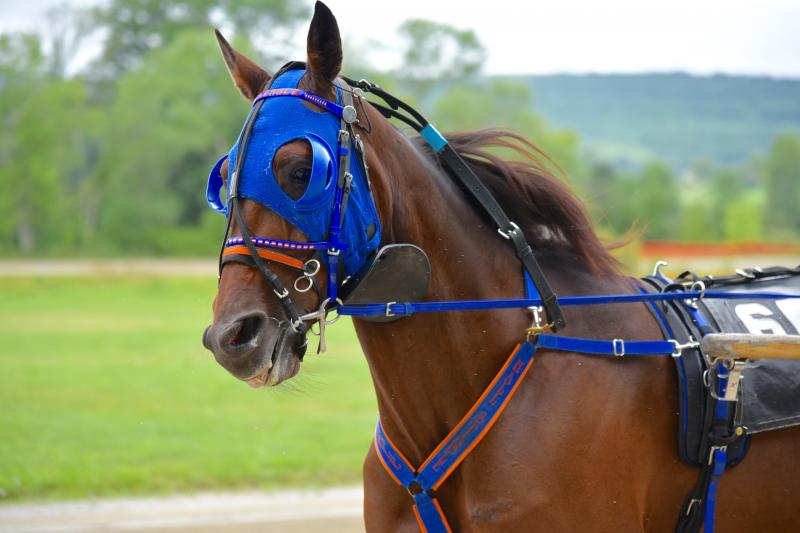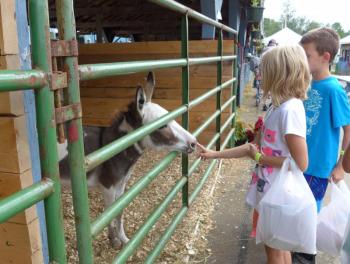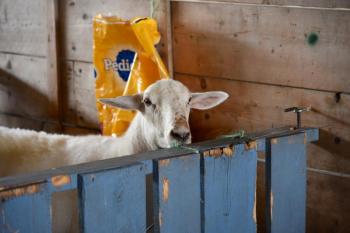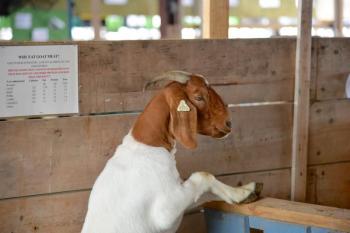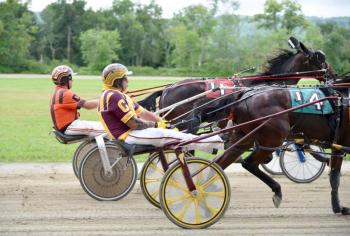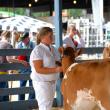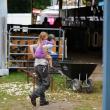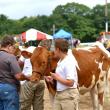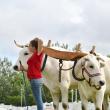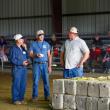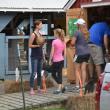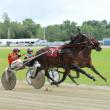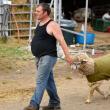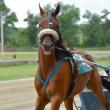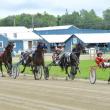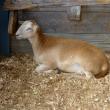UNION — The annual Union Fair is well underway on the fairgrounds, a Midcoast signal that summer is slowly inching toward fall. The harvest is collected, canned, frozen and sold. Hay is stacked by barns, the livestock is fat, and the horses are trotting fast.
The regional agricultural fairs are integral to Maine life, and the Union Fair runs through Aug. 29.
Photographer Joe McGurn was at the fair and this is what he saw.
The following is a history of the Union Fair, courtesy of the fair’s website. This article written by Janet Boetsch originally appeared in the 1992 Union Fair Premium book, and has been adapted here to reflect the last two decades.
The Birth of the Union Fair: Its History, Its Promise
In the September 17, 1869 issue of the Courier Gazette an announcement appeared stating that The North Knox Agricultural and Horticultural Society will hold its first annual fair at Union, October 5, 6, & 7. That publication was the announcement of the birth of the Union Fair. With the exception of 1943 and 1944, the fair has been held annually since with many changes along the way, and has become one of the best agricultural fairs in the State of Maine.
Societies to promote agriculture and the goods manufactured were being formed in Maine as many as three decades before Maine became a state in 1820. From 1821 to 1869, 57 Maine agricultural societies were incorporated, with the major purpose being to improve practices in agriculture and horticulture through exchanges of information on practices.
The book The First Century - Union Fair 1869-1969 describes the formation of an association of neighbors in five small communities in rural Maine - Appleton, Hope, Union, Warren, and Washington - which together in 1869 were incorporated by the Maine Legislature as the North Knox Agricultural and Horticultural Society.
As was the rule in the early days of the fairs, each town belonging to the Association took successive turns hosting the annual event. In 1895, by legislative action, the organization was renamed the Knox Agricultural Society.
Records show that the first day of the first fair was an ideal autumn day - clear, cool, comfortable - held at Union Common. Exhibitors and visitors arrived on foot, or by wagon or carriage, tying horses to hitching posts around the community after stables were filled. Temporary pens and ties for livestock were arranged for the cattle ground around the common. Exhibits for the field crops, carriages, agricultural implements, fruits, dairy products, embroidery, quilts, rugs and other homemade crafts were displayed at the Wingate, Simmons & Company carriage shop, also located on the common.
Competitions in plowing by horses and oxen were also held. Money for premiums originated from the State Treasury under the provisions of Chapter 24, Maine Public Laws of 1832, which would be the forerunner of some of funding used today through state agricultural stipends. As years passed and new competitions were added, interest and attendance grew.
Along with the usual displays, the following were added: calf skins, ten yards dressed woolen cloth, ten yards rug carpeting, patch quilt, counterpane and spread, and embroidered chair. Exhibits of livestock in those days were not limited to main species, but included all varieties of farm animals representative of traditional farm living. Competition categories listed not only cattle, sheep and horses, but also swine and poultry.
Although a decline is evident in the last several decades, through the more recent efforts of the local groups and 4-H programs, these species are being re-introduced and becoming again an integral and interesting part of the agricultural aspect of the Union Fair. For the last several years the poultry competition and display has continued to garner interest and, with the introduction of pig races and scrambles, swine has reclaimed its place as part of the overall agricultural aspect. The ever-increasing number and variety of exhibits in the first six annual fairs, was solid testimony of the expanding interest in the improvement of farm life, animals, machinery and household crafts and skills. It was mute evidence of the effectiveness of an Act of the Legislature in 1832 which provided money for prizes at incorporated fairs.
In 1878, the town of Washington hosted the events, held in Washington Village, and another first took shape in the new venture of vending. Tents and shacks were put up to house peanut vendors and games of chance. By 1885, food concessions had made their imprint - some selling snacks such as hot dogs, corn-on-the-cob, ice cream, and popcorn, some offering tidbits to supplement picnic lunches brought from home, and some serving complete meals. With the end of the first decade of the harvest fairs, local people had created a delightful outlet which gave tribute to the occasional tedium of their everyday lives, lent impetus through competitions to improve stock and livelihood, and introduced a spirit of neighborliness with adjacent communities. In 1886 the Association voted to hold all future fairs in Union.
The popularity of the Fair had increased, resulting in greater income from admissions charged, and such stabilized income made it possible to acquire a permanent home for its quarters and activities. In 1892 arrangements were made with the Union Track Association for use of the grounds (the current site of the Union Fair) and building for a term of five years. With most people travelling by horse and wagon, the trip to the fair from outlying towns was a long excursion. However, in 1893 a passenger could travel from Warren to Union via the Georges Valley Railroad for a fare of 40 cents.
At the Union station, a buckboard would deliver you to the grounds for an additional 10 cents. The fair trustees and officials of the Maine Central Railroad made an agreement to help boost business for the railroad and increase attendance at the fair. For 85 cents a person could travel, round trip, from Rockland to the Union Fair. This fee included admission to the fair.
By the turn of the century, more growth prompted changes. In 1900 all attendance records were broken with 5000 people passing through the gates. The Trustees, in 1901, were directed to purchase the land owned by the Union Track Association and an additional adjacent parcel owned by A. O. Ripley. Even though in 1869 the members of the North Knox Agricultural and Horticultural Society voted to have no course for horse racing, such action did not seem to quell the desire for racing. In 1892, a group of men interested in racing formed the Union Track Association, leased land from Almond O. Ripley and built the Union race track.
This arrangement lasted for ten years, when the society purchased the land and, due to racing interest, in 1902 horse racing became a feature of Union Fair's program. Winners of these simple races were awarded sheaves of oats which gave rise to the name oat races. In 1927 additional land was purchased to increase the area several acres; pari-mutual betting was added in 1935; and the motorized starting gate was first used in 1947. To keep the attention of betters, entertainment was provided on stage across from the grandstand: The Exhibition Mile of the Moxie automobile; bands from nearby towns; and vaudeville acts, including acrobats, comedians, and trained animals were among the attractions. The entertainment features eventually evolved into today's feature attractions held evenings.
By 1915, the long lines of automobiles waiting to get into the fair gave evidence that cars were here to stay. Travelling to the fair by automobile offered the advantage of being allowed to stay later, while fairgoers travelling by horse and wagon had to leave earlier allowing time to get home by chore time. The Midway of early days comprised games of chance, vendors selling foods and clothes, boxing bouts, and the merry-go-round, sometimes called the swing-it. In 1956, the trustees contracted with the King Reid Shows to be present. This did away with the so-called independent midway.
Three rides shown for the first time in Maine were the Kitty Whip, the Roller Plane and the Rollo Fun House. In 1959, Union Fair introduced the State of Maine Blueberry Festival planned in cooperation with the State Department of Agriculture. Since wild blueberries were plentiful locally, it made sense to initiate a blueberry festival during fair time which coincided with the fruit harvesting. The first festival featured a blueberry pie baking contest, pie eating contest and free pies to all fair visitors. Maine's incumbent Governor, John Reed, honored the occasion by presenting awards to the best piebaker,
Mrs. George Cole of Newcastle, and pie eater, Willard Pease, Jr. of Rockland, who consumed an entire pie in less than five minutes. These three festival attractions are still featured today. When patrons attend the fair now they are welcomed into Blueberry Acres, a permanent structure built specifically to be used in the promotion of the industry. Choosing a Blueberry Queen was an added feature of Blueberry Festival Day in 1961. Each of the 13 candidates was sponsored by a wild blueberry packer or processor, and the winner, Miss Monalee Smith of Brookville, represented that industry for one year.Smith received a silver trophy and $100.
The festival program has incorporated many novel ideas gathered since 1959, proving its success by witness of attendance at the pageant on Sunday, and on Friday of fair week, designated Wild Blueberry Festival Day which still features free blueberry desserts being distributed to fair attendees, exhibitors, volunteers, and vendors. Examples of these additions over the years are the pancake breakfast, blueberry spitting contests, an extensive selection of wild blueberry related items for sale, and baking contests, including the popular Two-crusted Pie competition, the winner of which goes on to the state competition. The cultivation of the festival has yielded many requests from nationwide locations for information about the annual celebration.
Throughout its lifetime, Union Fair has amended its operation to benefit the overall fair, with service to the public always the prime motivation. Additional buildings, grounds space, services and programs are evidence.
The attractive Sherman Park with its benches and picnic tables welcomes the weary or hungry to relax and enjoy the surrounding flower gardens. Daily musical entertainment and various demonstrations are also featured in the park, as well as the exhibition hall. The construction of this serene and attractive area plus an innovative, removable hub rail on the race track, were reasons Union Fair received a special award in 1988 at the annual convention for the Maine Agricultural Fairs. In 1998, the organization became known as Union Fair/Maine Wild Blueberry Festival, as the participation of exhibitors at the fair is no longer limited to Knox County, but encompasses a much larger region and is open to anyone. Exhibitors come from as far away as New Hampshire.
Active participation from anyone with an interest is always encouraged. Community support is pivotal to keeping Union Fair alive. What began in 1869 as a harvest festival, where local farmers and tradesmen gathered for three days to compete in agricultural events, has grown into an eight day long fair the third week in August. Although the fair has matured to meet modern times, it has remained a family tradition - preserving its original agricultural flavor. Extensive craft and farm exhibits (including cattle and sheep shows, pulling events, plus country home crafts), 4-H and farming competitions, and harness horse racing, as well as Midway rides and games, are features at Union Fair that provide a wide variety of interesting and exciting activities for all genres of people. Two exhibition halls display an impressive array of fine, homemade handcrafts - many of which are also for sale, native homegrown garden foods and decorated booths by local granges. Recent additions to the fair are the Maine Wine Pavilion and the 4-H Farm to Fair. The award winning wine pavilion was added in 2010 to showcase the growing wine industry in Maine.
Imagine being able to experience, in one place, wines from 20 Maine wineries some of which use Maine grown grapes a relatively new crop to the agricultural landscape. In 2012 the 4-H introduced Farm to Fair, an exhibit designed to teach children, and adults too, how the food we eat and the products we use are produced. Walking from one area of the fair to another, fairgoers can travel from present day highlights of midway excitement to bygone days when farming was a predominant way of life. An additional treat for young and old can be found in the Matthews Museum of Maine Heritage located at the entrance to the grounds. It is acclaimed as one of New England's Finest. In tune with Union Fair's agricultural theme, trustees voted in 1964 to purchase from Mr. Edward A. Matthews a collection of antiques, agricultural implements, books, and household devices, and the Matthews Museum of Maine Heritage was born.
2013 found the fair using the technologies of the times. Our Facebook page allows the fair to foster social connectivity, Wi-Fi is available on the grounds for the use of our patrons and vendors, QR codes will be included on advertising posters to allow connection to our newly recreated website, and newly installed computer software will allow faster and more efficient processing of premium awards.
The fairgrounds are nestled in a quiet country setting off Route 17 between Maine's capital city, Augusta, and the beautiful coastal region surrounding the Camden Hills. Every year, the fair is planned and executed by its trustees, officers and hundreds of volunteers. Each officer and trustee is responsible for an assigned component of operation, which requires a great deal of work and cooperation.
Most of the people dedicated to keeping Union Fair running as one of Maine's best agricultural fairs have farms of their own, work at local businesses, or participated in fair exhibitions during their childhood. Being part of the organization for many is a loved hobby stemming from family tradition steeped in a history of participating at the fair for generations, as well as a sense of pride for the fair's part in the preservation of agriculture. Testimony to this is seen in the fact that many trustees in the past decades have served for more than 25, and some over 50, years. Furthermore, some families have been involved with the organization of the fair for generations, with one family, having members from 6 consecutive generations serving the fair. It is that dedication which promises continued service to the agricultural community and the public.


